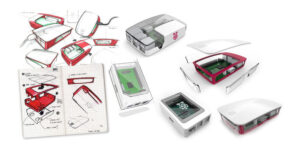Find out how an observatory in northern California helped NASA plot the course home for astronauts Jim Lovell, Fred Haise and Jack Swigert on Apollo 13.
” data-credit=”Image: NASA” rel=”noopener noreferrer nofollow”>
Fred Haise (left), Jim Lovell, and Jack Swigert emerge from the recovery helicopter on-board the aircraft carrier Iwo Jima on April 17, 1970, after safely returning from their mission.
Image: NASA
Fifty years ago, on the night of April 16, 1970, a team of astronomers led by Dr. Terry Galloway from the Eastbay Astronomical Society at the Chabot Observatory in Oakland, Calif. played a critical role in bringing home the astronauts on the Apollo 13 spacecraft.
The damaged spacecraft with astronauts Jim Lovell, Fred Haise and Jack Swigert on board was returning home from the moon and needed to change course and that would require one last burn of the lunar module’s engines to re-enter the Earth’s atmosphere. Before that could happen, NASA needed the precise location of where Apollo 13 was in order to time that burn.
SEE: NASA’s unsung heroes: The Apollo coders who put men on the moon (cover story PDF) (TechRepublic)
At the time, there were three observatories in the Optical Tracking Network that NASA Ames Research Center used to supplement their own data during the Apollo program, explained Gerald McKeegan, astronomer and board member at the Chabot Space & Science Center, which is what the Chabot Observatory is now known as.
” data-credit=”Image: Chabot Space & Science Center” rel=”noopener noreferrer nofollow”>

The original hand plotted chart of the star field and spacecraft position, showing the critical 06:00 UT position in red.
Image: Chabot Space & Science Center
“As it turned out, none of the other observatories in the network had good weather, so they weren’t able to observe. The Chabot Observatory had good weather. So at 10 o’clock at night [Pacific Time] on the 16th of April, they took observations using what today we’d consider very crude techniques,” McKeegan explained.
It took the team 10 or 15 minutes to calculate the location of the Apollo 13 spacecraft, starting their observations 20 minutes before the exact coordinates were due to NASA, at 0600 Universal Time on April 17, 1970.
“They were visually looking through the telescope and they saw the spacecraft. They had to plot the stars in view onto a piece of graph paper and accurately plot it and then they had to plot the position of the spacecraft relative to the stars on the graph paper, and measure the coordinates on the graph paper. Today, it would be done in a matter of seconds using digital cameras and computers,” McKeegan said.
PHOTOS: The 50th anniversary of the unforgettable Apollo 13 mission (TechRepublic)
” data-credit=”Image: Chabot Space & Science Center” rel=”noopener noreferrer nofollow”>

The 1915-built telescope that was used to track Apollo 13.
Image: Chabot Space & Science Center
“Five hours after that, the spacecraft re-entered the Earth’s atmosphere. It was important for them to calculate the exact position of the spacecraft. If the spacecraft entered at too much of a shallow angle it would have gone into space,” he said.
The telescope that was used to track the Apollo 13 was a 20-inch refracting telescope, known as Rachel, that was built in 1915 and is still in use today.
A little known factoid about the observatory and Apollo 13 is that Tom Hanks, who was born in 1956 and played astronaut Jim Lovell in the 1995 Apollo 13 film, used to volunteer at the Chabot Observatory when he was a teenager. The observatory had a volunteer program for teenagers and the young Hanks, who lived in the area, was a participant in the program, McKeegan said.
Chabot Space and Science Center and Eastbay Astronomical Society will be providing a free virtual talk on the Chabot Observatory’s role in the Apollo 13 rescue on April 25 from 7:30-9 pm PT. Participants will hear a first-hand account of this dramatic day from David Rodrigues, one of the students at the observatory that day who helped track the Apollo 13 spacecraft.
While the Optical Tracking Network is no longer in use, Chabot’s 36-inch telescope, known as Nellie, is part of efforts to search for and track near-Earth asteroids in support of NASA’s Planetary Defense Office and the International Asteroid Warning Network.
Although Chabot Space and Science Center is currently closed to slow the spread of COVID-19, after the center can safely reopen these historic telescopes will be available again for free viewing nights on Friday and Saturday nights from 7:30-10:30 pm.
” data-credit=”Image: Chabot Space & Science Center” rel=”noopener noreferrer nofollow”>

A photo of the Chabot Observatory site as it appeared around 1970.
Image: Chabot Space & Science Center
Also see
” data-credit=”Image: NASA” rel=”noopener noreferrer nofollow”>

When Apollo 13 launched on the morning of April 11, 1970, no one knew the dangers the mission would face.
Image: NASA
Source of Article




